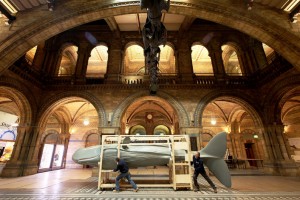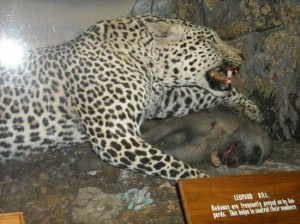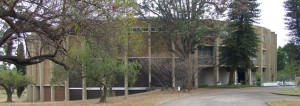Natural History Museum of Zimbabwe
http://www.naturalhistorymuseumzimbabwe.com
The Zimbabwean Stone Sculpture Movement
Nicholas Mukomberanwa was a pioneer in the contemporary Shona sculpture movement. His work is in the permanent collections of museums around the world. The artist began carving stone in 1962 after meeting Frank McEwen, the first director of the National Gallery, in what was then Salisbury, Rhodesia. In the 1950s, while colonialism was still in effect, McEwen, a British man, opened a workshop that provided Shona sculptors a safe place to work, and the opportunity for their art to be introduced to Europe and America. Shona sculptors inherited a sophisticated culture, which produced stone structures and sculpture 500 years ago. In this stone carving, the continuity of Shona culture is articulated by the loving and powerful embrace of the elders. Recognized by their wavy beards, they may be receiving guidance from an ancestor spirit to assist them in their leadership. About “The Law Givers,” the artist says, “We accept what the elders decide and their decisions become our laws.”
The Rhodesian Museum, later known as the National Museum was founded in 1902 and it has had several homes. First in the Bulawayo Public Library which the collections rapidly outgrew, then the old Congregational Church in Main Street (1905-1910) was purchased, then a specially built structure on Fort Street (now the tax office) from 1910-1964 and its present location in Centenary Park. The unique round museum was opened to the public on 20th March 1964.
 Initially the museum had a focus on economic geology but with time successive curators have introduced new fields of interest. Many of these researchers have been leading world figures in their fields (see part curators). They have left us with one of the best collections of Zimbabwe’s, and indeed the region’s, natural heritage. In 1981, under a policy of centralization, the National Museums and Monuments streamlined the operations of its five museums and as a result the National Museum was renamed the Natural History Museum of Zimbabwe (NHMZ) occupying the Western region of the country. All the natural science collections from the other museums were moved to the NMHZ. Today the museums research collections and exhibits include geology and fossils, mammals, birds, fish, reptiles, amphibians and invertebrates, as well as broad cross-section of the social history of southern and central Africa.
Initially the museum had a focus on economic geology but with time successive curators have introduced new fields of interest. Many of these researchers have been leading world figures in their fields (see part curators). They have left us with one of the best collections of Zimbabwe’s, and indeed the region’s, natural heritage. In 1981, under a policy of centralization, the National Museums and Monuments streamlined the operations of its five museums and as a result the National Museum was renamed the Natural History Museum of Zimbabwe (NHMZ) occupying the Western region of the country. All the natural science collections from the other museums were moved to the NMHZ. Today the museums research collections and exhibits include geology and fossils, mammals, birds, fish, reptiles, amphibians and invertebrates, as well as broad cross-section of the social history of southern and central Africa.
 In line with the museums policies for research and conservation, the Natural History Museum of Zimbabwe offers education programmes to both students and the public. It has, and seeks to renew, collaboration with other research institutes and museums both in the regional and internationally.
In line with the museums policies for research and conservation, the Natural History Museum of Zimbabwe offers education programmes to both students and the public. It has, and seeks to renew, collaboration with other research institutes and museums both in the regional and internationally.


